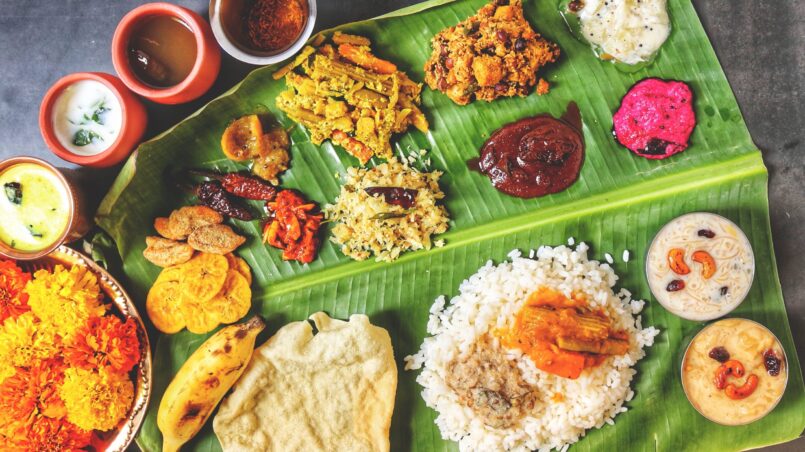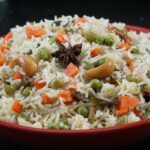Introduction to South Indian Cuisine
South Indian cuisine is renowned for its rich and diverse Flavors, rooted in a culinary heritage that spans centuries. Influenced by historical and cultural factors, as well as the geographical diversity of the region, South Indian cuisine offers a mouthwatering array of dishes that are both comforting and tantalizing to the taste buds.
A Brief Overview of South Indian Culinary Heritage
South Indian cuisine can be traced back to ancient times, with its origins deeply rooted in the traditional practices and customs of the region. It is characterized by the use of a wide range of spices and ingredients, including rice, lentils, coconut, and a variety of local vegetables. The cuisine emphasizes the balance of flavors, with dishes that are often tangy, spicy, and aromatic.
Key Influences on South Indian Cuisine
South Indian cuisine has been shaped by various influences over the centuries, both historical and cultural. The region’s proximity to the coast has resulted in the integration of seafood into many of its dishes. Additionally, the long history of trade and colonization in the region has brought in influences from Arab, Persian, and European cultures. The blending of these influences has resulted in a unique culinary tradition that is distinctly South Indian.
Historical and Cultural Influences
Throughout history, South India has been influenced by various dynasties and rulers, such as the Cholas, the Pallavas, and the Vijayanagara Empire. Each dynasty left its mark on the region’s cuisine, introducing new ingredients, cooking techniques, and flavors. Furthermore, the cultural practices and traditions of the different communities in South India, such as the Brahmins and the Muslims, have also played a significant role in shaping the cuisine.
Geographical Factors
The diverse geography of South India, with its lush coastal plains, fertile river deltas, and hilly terrains, has contributed to the wide range of ingredients and flavors in the region’s cuisine. The availability of abundant seafood has influenced the coastal regions, while the fertile plains have allowed for the cultivation of rice and a variety of vegetables. The hilly regions, on the other hand, are known for their spices and coffee plantations, adding a distinct flavor to the cuisine.
The Diversity of South Indian Cuisine
South Indian cuisine is incredibly diverse, with each state in the region having its own unique culinary traditions and flavors. Let’s take a closer look at the distinct characteristics of Tamil Nadu, Kerala, Karnataka, and Andhra Pradesh cuisines.
Regional Varieties of South Indian Cuisine
Tamil Nadu Cuisine

Tamil Nadu cuisine is known for its bold and flavorful dishes that are often rich in spice. The cuisine of this state is predominantly vegetarian, with a strong emphasis on rice, lentils, and local vegetables. Traditional Tamil Nadu dishes, such as sambar, rasam, and dosa, are enjoyed as part of everyday meals.
Traditional Tamil Nadu Dishes
- One of the most popular traditional dishes in Tamil Nadu is idli, a soft and fluffy steamed rice cake that is served with coconut chutney and sambar. It is a staple breakfast item in many households.
- Another classic Tamil Nadu dish is pongal, a savory rice and lentil dish flavored with pepper, cumin, and ghee. It is often served with coconut chutney and sweet jaggery.
Unique Spices in Tamil Cuisine
- Tamil Nadu cuisine is known for its unique spice blends, such as the flavorful sambar powder, which is a blend of roasted spices including coriander seeds, cumin seeds, fenugreek, and red chilies.
- In addition to the spices, Tamil Nadu cuisine also incorporates the use of tamarind, which adds a tangy and sour flavor to many dishes.
Popular Tamil Street Foods
- Chennai, the capital city of Tamil Nadu, is famous for its street food culture. One popular street food is the crispy and savory medu vada, made from a batter of lentils and deep-fried to perfection.
- Masala dosa, a thin and crispy rice and lentil crepe stuffed with a spicy potato filling, is another much-loved street food in Tamil Nadu, especially in the city of Madurai.
Kerala Cuisine

Kerala cuisine is known for its distinctive flavors and the generous use of coconut in its dishes. Located on the southwestern coast of India, Kerala has a rich tradition of both vegetarian and non-vegetarian dishes, often prepared using a variety of spices and coconut-based gravies.
Distinctive Flavors of Kerala dishes
- The flavors of Kerala cuisine are often enhanced by the use of coconut oil, curry leaves, and mustard seeds, giving the dishes a unique taste and aroma.
- The cuisine also incorporates the use of various spices, such as black pepper, cardamom, cinnamon, and cloves, which add depth and complexity to the flavors.
Staple Ingredients in Kerala Cuisine
- Rice, which is a staple in South Indian cuisine, holds great significance in Kerala cuisine as well. It is the main component of traditional dishes like appam, a lacy rice pancake, and puttu, a steamed rice cake.
- Another staple ingredient in Kerala cuisine is seafood, owing to its coastal location. Spicy fish curries and prawn dishes are popular delicacies in this region.
Traditional Kerala Sadya (Feast) Delicacies
- One of the highlights of Kerala cuisine is the traditional Kerala Sadya, a grand feast served on a banana leaf during festive occasions. It consists of a wide variety of vegetarian dishes, including avial (a mixed vegetable preparation), olan (ash gourd and cowpeas in coconut milk), and payasam (a sweet pudding made with rice, jaggery, and coconut milk).
Karnataka Cuisine

Karnataka cuisine offers a delightful mix of flavors, combining the use of locally grown ingredients with unique spice blends. The cuisine of Karnataka is known for its vibrant flavors and the use of diverse ingredients.
Signature Dishes from Karnataka
- Bisi bele bath, a spicy and flavorful rice preparation with lentils and vegetables, is one of the signature dishes of Karnataka. It is often served with a dollop of ghee and accompanied by papad and raita.
- Mysore masala dosa, a variation of the classic dosa, is a popular street food in the city of Mysore. It is typically served with spicy chutney and sambar.
Notable Ingredients in Karnataka Cuisine
- The cuisine of Karnataka makes use of a variety of local ingredients, such as jaggery, coconut, and ragi (finger millet). Ragi is widely consumed in the form of ragi dosa, ragi mudde (finger millet dumplings), and ragi balls.
Festive Foods of Karnataka
- Karnataka is known for its vibrant festivals, and with festivals come special dishes. The state is famous for its unique festival delicacies, such as holige (a sweet flatbread filled with jaggery and lentils), obbattu saaru (a flavorful lentil soup), and bele payasa (a rich and creamy lentil and rice pudding).
Andhra Pradesh & Telangana Cuisine

Andhra Pradesh & Telangana cuisine is known for its fiery and spicy flavors. This cuisine has borrowed influences from various regions, including the neighboring states of Tamil Nadu and Karnataka.
Spicy Andhra & Telangana Delights
- Andhra & Telangana cuisine is famous for its spicy pickles, such as avakaya (mango pickle) and gongura pachadi (sorrel leaf pickle). These pickles are an indispensable part of any Andhra meal, adding a burst of flavor and heat.
- Gongura, a sour leafy green, is a key ingredient in many Andhra dishes. It is used to make gongura pachadi and gongura pulusu (a tangy stew).
Key Ingredients in Andhra & Telangana Cuisine
- Andhra Pradesh & Telangana cuisine makes ample use of spices like red chili powder, cumin, and mustard seeds, which add a distinctive flavor and heat to the dishes.
- The cuisine also incorporates the use of tamarind, as it adds a tangy flavor to many of the traditional dishes, such as pulihora (tamarind rice) and pulusu (a tangy stew).
Andhra & Telangana Biryanis and Immortal Delicacies
- Andhra Pradesh & Telangana is renowned for its flavorful biryanis, such as the famous Hyderabadi biryani. The use of aromatic spices and long-grained basmati rice creates a fragrant and mouthwatering dish.
- Pulihora, also known as tamarind rice, is another iconic dish that is often prepared during festivals or special occasions. It is a tangy and spicy rice dish that combines the flavors of tamarind, spices, and curry leaves.



